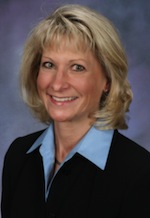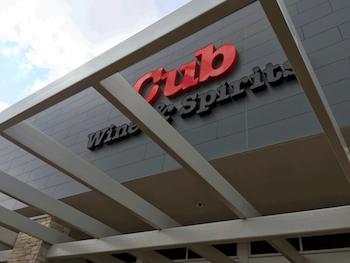by Terrie Ellerbee/associate editor
There is a lot of water in the Land of 10,000 Lakes, and there appears to be something in it. Minnesota, and specifically the Twin Cities, is drawing in grocery retailers and enticing existing operators to expand.
“It’s an exciting time for Minnesotans because the choice in the marketplace really does create better retail products. We know that,” Jamie Pfuhl, president of the Minnesota Grocers Association (MGA) said. “Competition makes everybody be at their shiny best, and that’s great for our industry and for Minnesotans, so that is what I see. How we all shake out will be interesting.”

Kowalski’s Markets, based in Woodbury, opened a new 17,000-s.f. store in Excelsior July 29. It is the first new location for the grocer since it opened an Eagan store in 2008.
The Excelsior Kowalski’s is the only one to feature a bakery service counter and full-service meat department. Other elements in the store not found in the retailer’s other nine markets include an expanded sushi program, made-to-order pasta bar, chef-crafted carver sandwiches and a wine shop. Kowalski’s also announced on its Facebook page that it has renewed its lease in White Bear Lake for another five years and plans to expand deli, bakery, sushi and imported cheese offerings in that store in 2016.
St. Cloud-based Coborn’s has been busy in recent years opening stores in North Dakota for the multitudes that swarmed on the oil fields. Its efforts there were recognized in 2014, when the North Dakota Grocers Association named president and CEO Chris Coborn Grocer of the Year. Coborn’s recently purchased four stores in Wisconsin as well.
 In its home state, Coborn’s is building a new store in Isanti that is set to open next summer. The 45,000-s.f. store will be located at Highway 65 and County Road 5. It is to be a “next generation” store, meaning a significant amount of square footage will be dedicated to fresh offerings. The project also includes a convenience store and car wash.
In its home state, Coborn’s is building a new store in Isanti that is set to open next summer. The 45,000-s.f. store will be located at Highway 65 and County Road 5. It is to be a “next generation” store, meaning a significant amount of square footage will be dedicated to fresh offerings. The project also includes a convenience store and car wash.
Coborn’s said it chose the city because Isanti is “healthy and vibrant,” with a median age of 28. It cited a January 2015 report by Maxfield Research saying that by 2020, the number of households in Isanti is projected to grow by 9.6 percent.
Coborn’s also built a gluten-free bakery from scratch in St. Cloud to meet demand for fresh gluten-free bakery treats at its 50 supermarkets and for its online delivery company, CobornsDelivers. Products with the “G Free Bakery” label began appearing in stores in August.
Coborn’s announced in September that it would invest $3.1 million to raise its base hourly pay to $9.50 per hour. The company is employee-owned and has more than 8,000 workers. The new wage is 5.5 percent higher than the Minnesota minimum wage, which itself is ratcheting up, and Coborn’s said it is significantly higher than the base pay offered in neighboring states.
Minnesota’s minimum wage is increasing in incremental steps. For “large” employers, the rate increased to $9.00 in August and will rise again to $9.50 an hour on Aug. 1, 2016.
Coborn’s move is likely in part a reaction to the labor market. Minnesota’s unemployment rate is 3.7 percent (and in North Dakota, it is 3.1 percent).
Pfuhl told The Shelby Report that there are bigger problems than wages.
“The increase in wage certainly does make a difference, but what we hear more is truly the marketplace is taking care of itself. Finding people willing and wanting to work in our stores is one of the greatest challenges,” she said. “I think wage plays a role in pricing and obviously in your expenses and the bottom line, but at the end of the day, we need bodies to work.”
The labor pool shrinks with every new opening, and there are many yet to come.
 Fresh Thyme Farmers Market opened its first Minnesota location in Bloomington on Sept. 30. It will open stores in Apple Valley and in St. Louis Park in 2016.
Fresh Thyme Farmers Market opened its first Minnesota location in Bloomington on Sept. 30. It will open stores in Apple Valley and in St. Louis Park in 2016.
Iowa-based Hy-Vee has operated stores in Minnesota, but it opened its first Twin Cities locations in New Hope and Oakdale locations in September. The employee-owned company will open in Lakeville and Brooklyn Park in 2016 and has signed a lease for a 92,800-s.f. store that will anchor the Central Park Commons project in Eagan when it opens in late summer 2016.
Hy-Vee CEO Randy Edeker told the Minneapolis Star Tribune in July that the Twin Cities could become the chain’s largest market as it grow its presence there over the next 10 years.![]()
Whole Foods Market will move its St. Paul store on South Fairview Avenue to a site less than a mile away at the corner of Selby and Snelling and open it in spring 2016.
The Texas-based retailer also will open a new Woodbury store at the site of a former State Farm office complex, where it will anchor the new CityPlace development.
 Minneapolis-based Supervalu’s Cub Foods banner broke ground for a new 60,000-s.f. store in White Bear Lake in April. The store had not opened as of press time, but was scheduled to debut in December.
Minneapolis-based Supervalu’s Cub Foods banner broke ground for a new 60,000-s.f. store in White Bear Lake in April. The store had not opened as of press time, but was scheduled to debut in December.
Next to the Cub Foods in Stillwater, a Cub Wine & Spirits opened on Nov. 17. At 9,000 s.f., it is more than three times larger than the former Cub Liquor store. 
In mid-2014, Supervalu and four independent grocers, including Jerry’s Enterprises, Haug Enterprises, Lund Food Holdings and Radermacher Enterprises, teamed up and took over 18 Rainbow stores that Roundy’s Inc. left behind when it exited the Twin Cities market.
“The Rainbows that stayed open with the new partnership are certainly thriving,” Pfuhl said. “What’s really interesting is that the current players in the market are thriving and continue to be strong and build their capacity as well. We’re seeing expansion out of every one of our partners here. Everybody is growing and booming and continuing.”
It is no surprise that Robert Mariano, chairman, president and CEO of Milwaukee-based Roundy’s Inc., cited “an increased competitive footprint in the Minneapolis/St. Paul market” as one reason for abandoning the Rainbow chain to focus on its stores in Chicago and Wisconsin.
Now Kroger has announced that it will acquire Roundy’s. Kroger does not currently operate any stores in Minnesota, but time will tell.
Supervalu explores Save-A-Lot spinoff
Supervalu announced in July that it has begun preparation to allow for a possible spinoff of Save-A-Lot into standalone, publicly traded company. But it hasn’t been forthcoming with much more information than that.
No specific timetable has been set and there are no assurances that the separation will be complete or that any other change in the company’s overall structure would occur.
“We have multiple work streams in place with respect to our planning for a possible separation of Save-A-Lot, such as accounting, finance, tax and legal,” Duncan said at the company’s second quarter earnings call on Oct. 21. “Given where we are in the process, we won’t be providing any additional details, including any sort of timeline at this time.”
Network identical store sales were negative 1.6 percent at Save-A-Lot in the second quarter, while corporate store identical sales were up for the ninth consecutive quarter.
The chain has been impacted by commodities prices. Product cost deflation accelerated from negative 2.5 percent in the first quarter to negative 4 percent in the second.
Save-A-Lot stores basically have three departments: grocery, meat and produce. If there is deflation in any one of the three categories, “it has a heck of a lot bigger impact on us than anybody else.
“If you are shipping a case last year that was $10 and this year it’s $8, that’s deflation, and that’s what we’re seeing in meat and produce and dairy,” Duncan said. “If inflation/deflation was flat, we’d be talking a whole different story here, but unfortunately it’s not.”
Deflation is offset in conventional stores because there are more departments.
Besanko said to think of the difference in SKUs between a Save-A-Lot store and another of the company’s food banners or an independent customer’s stores.
“In the independent business or in the retail food banner, we sell cashew milk, we sell almond milk, we sell half-and-half, we sell fat-free half and half—I mean, there’s just a broad SKU of products available in the dairy aisle in a traditional grocery store. At Save-A-Lot, however, we don’t sell most of that; in fact, we really sell whole milk and 2% milk, and occasionally some skim milk.
“So the SKU difference between the two assortments is fairly dramatic, so when you see inflation in certain product categories, in this case in milk, it’s magnified at Save-A-Lot versus a traditional grocer, so that’s, I think, the effects we’re seeing on these commodity products on this edited assortment at Save-A-Lot.”
Duncan said Save-A-Lot represents “a great growth opportunity” for the company.
Grafton said that when deflationary pressures begin to ease, “we believe the underlying business fundamentals are in place to drive higher ID sales across the network.”
*Editor’s note: This Minnesota Market Profile appears in the January 2016 print edition of The Shelby Report of the Midwest. See that edition for more about the state’s marketplace.






